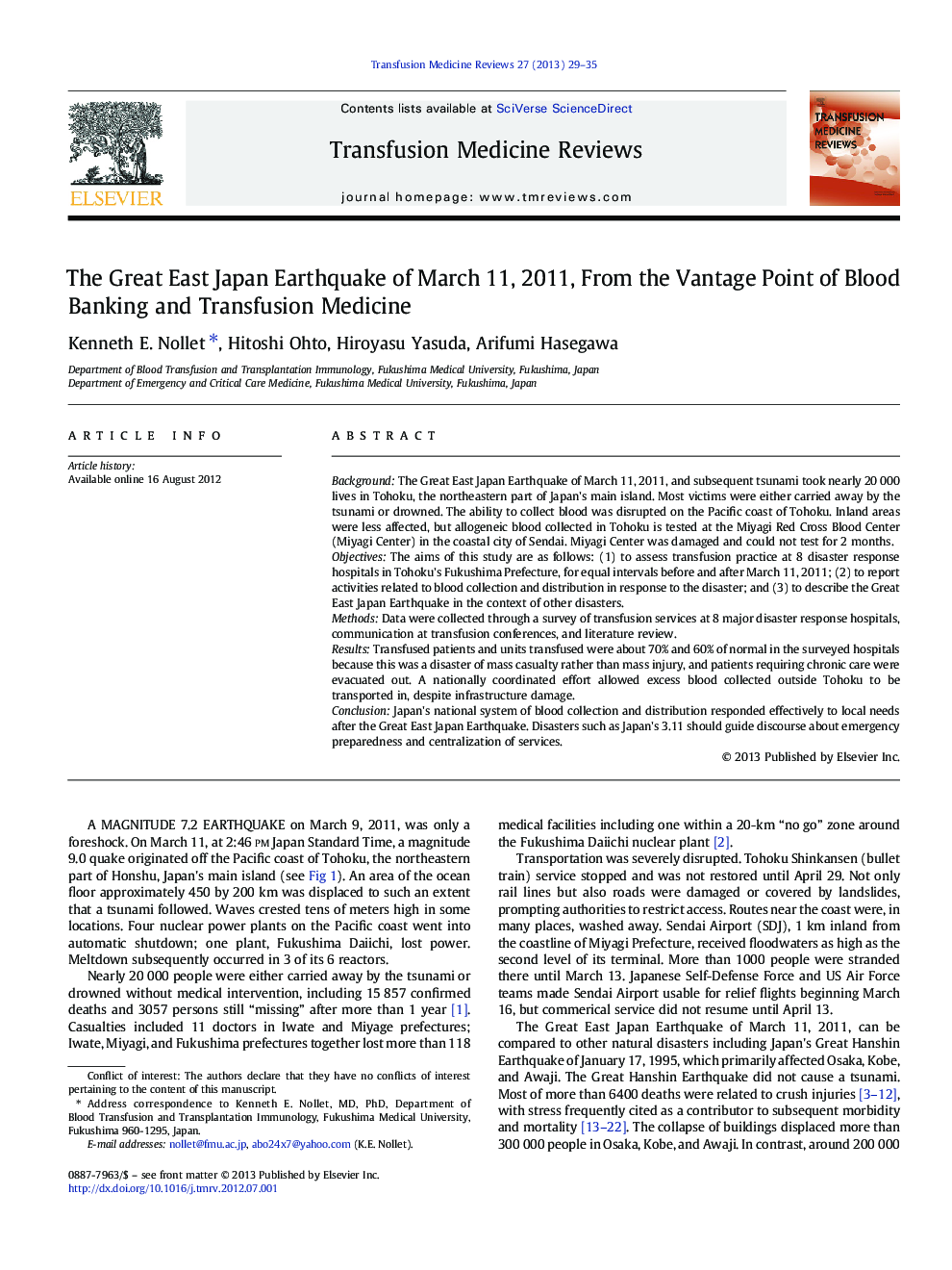| Article ID | Journal | Published Year | Pages | File Type |
|---|---|---|---|---|
| 3336612 | Transfusion Medicine Reviews | 2013 | 7 Pages |
BackgroundThe Great East Japan Earthquake of March 11, 2011, and subsequent tsunami took nearly 20 000 lives in Tohoku, the northeastern part of Japan's main island. Most victims were either carried away by the tsunami or drowned. The ability to collect blood was disrupted on the Pacific coast of Tohoku. Inland areas were less affected, but allogeneic blood collected in Tohoku is tested at the Miyagi Red Cross Blood Center (Miyagi Center) in the coastal city of Sendai. Miyagi Center was damaged and could not test for 2 months.ObjectivesThe aims of this study are as follows: (1) to assess transfusion practice at 8 disaster response hospitals in Tohoku's Fukushima Prefecture, for equal intervals before and after March 11, 2011; (2) to report activities related to blood collection and distribution in response to the disaster; and (3) to describe the Great East Japan Earthquake in the context of other disasters.MethodsData were collected through a survey of transfusion services at 8 major disaster response hospitals, communication at transfusion conferences, and literature review.ResultsTransfused patients and units transfused were about 70% and 60% of normal in the surveyed hospitals because this was a disaster of mass casualty rather than mass injury, and patients requiring chronic care were evacuated out. A nationally coordinated effort allowed excess blood collected outside Tohoku to be transported in, despite infrastructure damage.ConclusionJapan's national system of blood collection and distribution responded effectively to local needs after the Great East Japan Earthquake. Disasters such as Japan's 3.11 should guide discourse about emergency preparedness and centralization of services.
